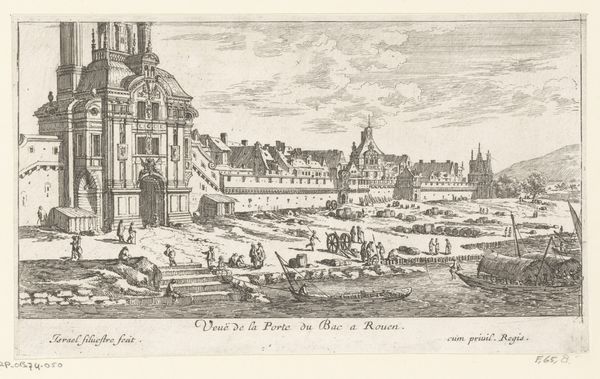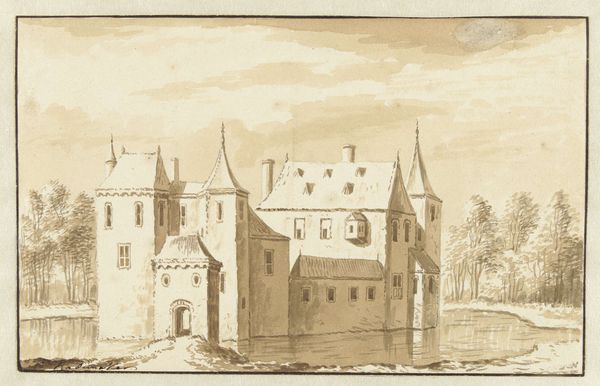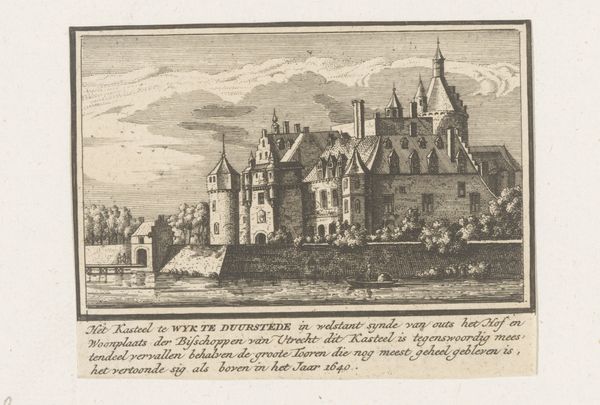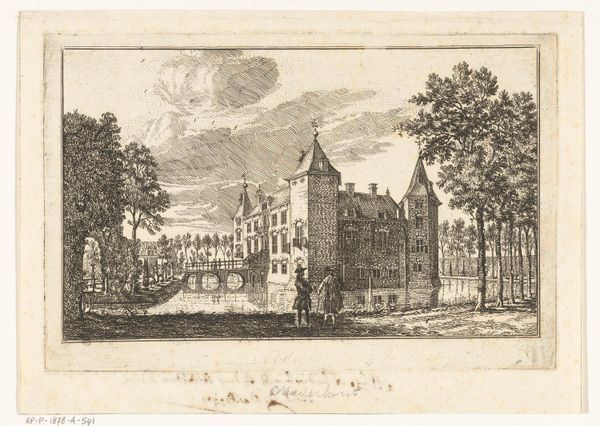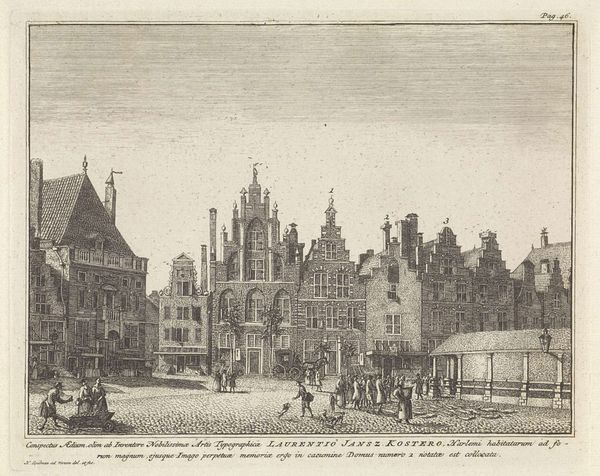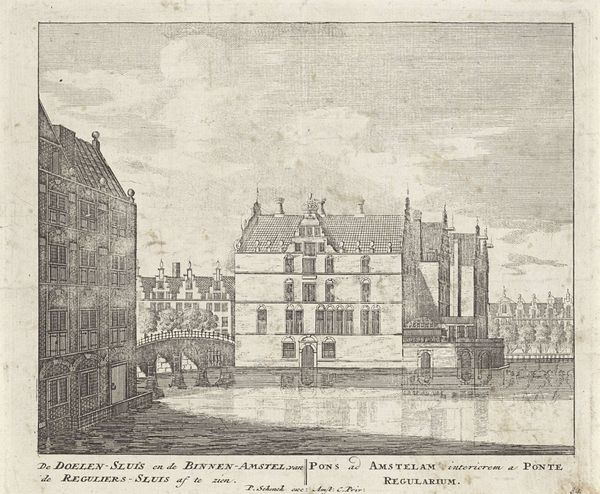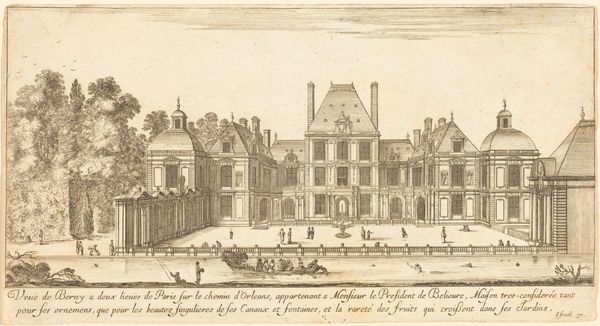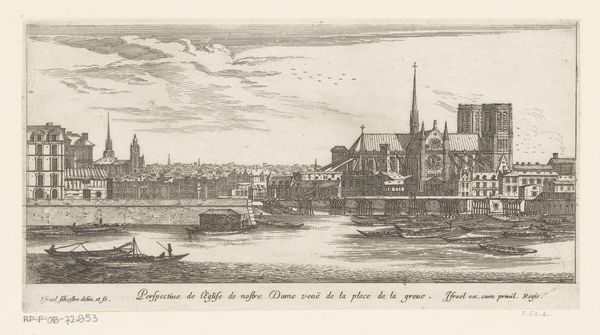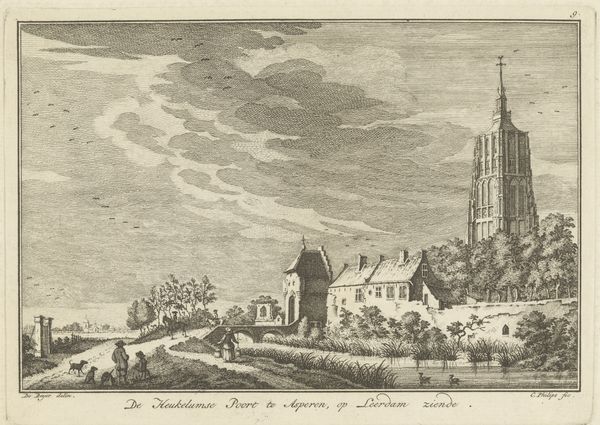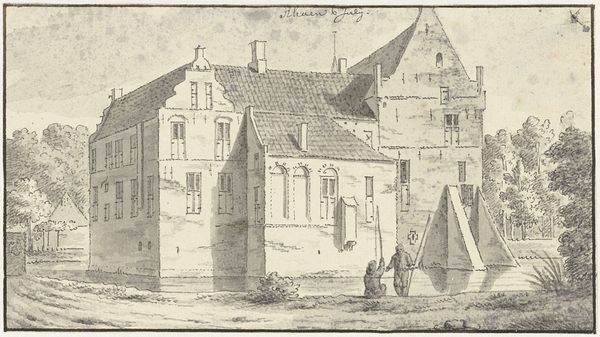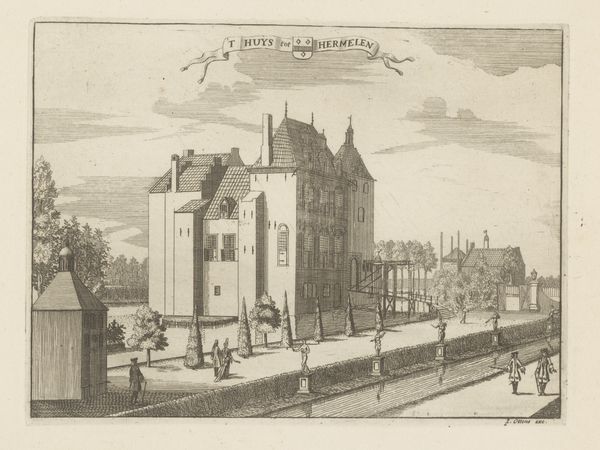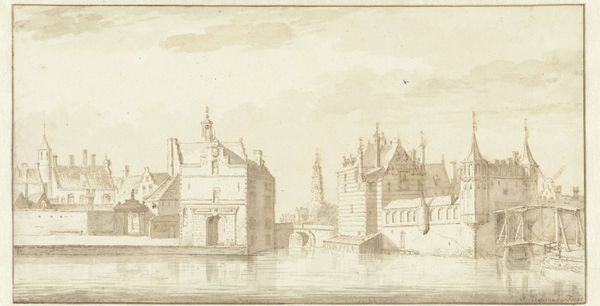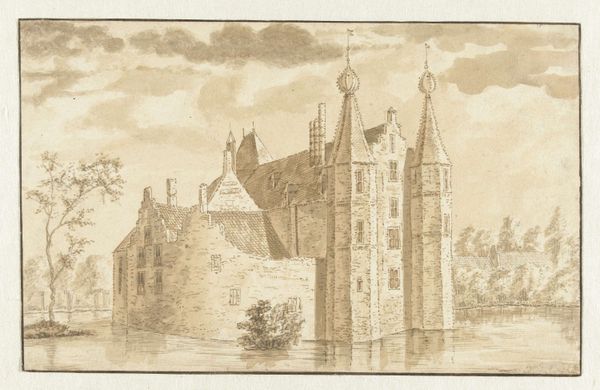
#
architectural sketch
#
aged paper
# print
#
pencil sketch
#
old engraving style
#
sketch book
#
personal sketchbook
#
old-timey
#
19th century
#
historical font
#
columned text
Dimensions: plate: 14.5 x 21.6 cm (5 11/16 x 8 1/2 in.) sheet: 16.9 x 23 cm (6 5/8 x 9 1/16 in.)
Copyright: National Gallery of Art: CC0 1.0
Curator: Looking at "Groenendael Abbey," a print created in 1647 by Wenceslaus Hollar, what strikes you first? Editor: The overwhelming sense of peace and contemplation. The detailed rendering creates a calm mood, as the building shimmers in the still water. But I also immediately think about the artist and his process. This level of detail must have demanded careful labor. Curator: Precisely. Consider the symbolism embedded within. Abbeys often represented not only religious devotion but also intellectual pursuits. Notice how the architectural forms mirror traditional monastic values – order, structure, and contemplation of the divine through artistic or scientific study. Editor: That reminds me about Hollar and the etching process during this time. I’m thinking about the materials – the metal plate, the acid, the press. Etching allowed for this incredible level of detail, and the relatively easy portability of prints democratized images and ideas, disseminating views of powerful institutions like the abbey. Curator: Absolutely. The repetition, through printmaking, is vital, disseminating these emblems of spiritual contemplation. Moreover, think of the water. The building's reflection seems almost like an echo, suggesting a cyclical, enduring quality. The location itself would have stood for refuge, safety, introspection. Editor: Yet the medium itself contradicts that isolation! This is an object produced for consumption and dispersal, a commodity reflecting—and participating in—emerging networks of trade and communication. And with its implied connection to scholarship and research, the print is doing very specific cultural work, almost a type of advertising or subtle symbolic message to encourage certain patrons. Curator: That intersection is quite striking. We're left pondering this beautiful, fragile image reflecting both spiritual ideals and early capitalism, cultural power. Editor: A real collision between faith, craft and industrial beginnings—the etching quietly mediating commerce, the divine, and material change.
Comments
No comments
Be the first to comment and join the conversation on the ultimate creative platform.

